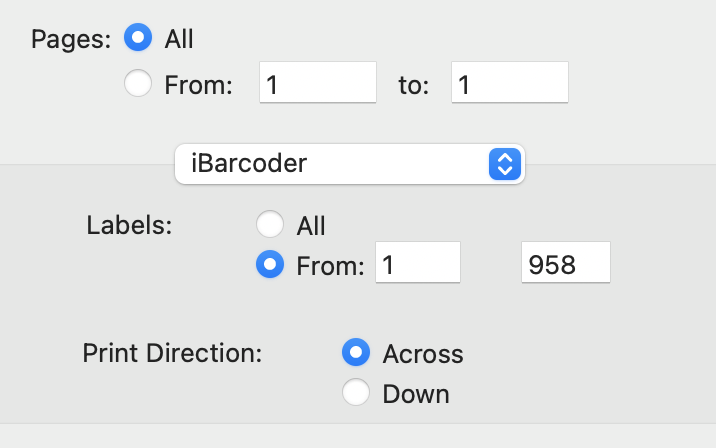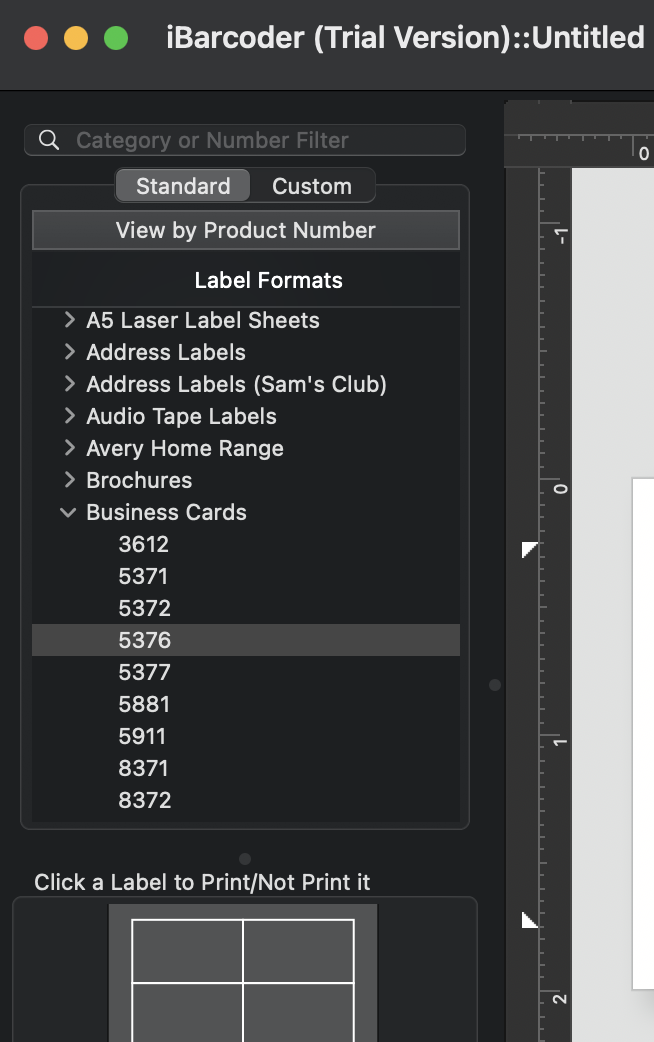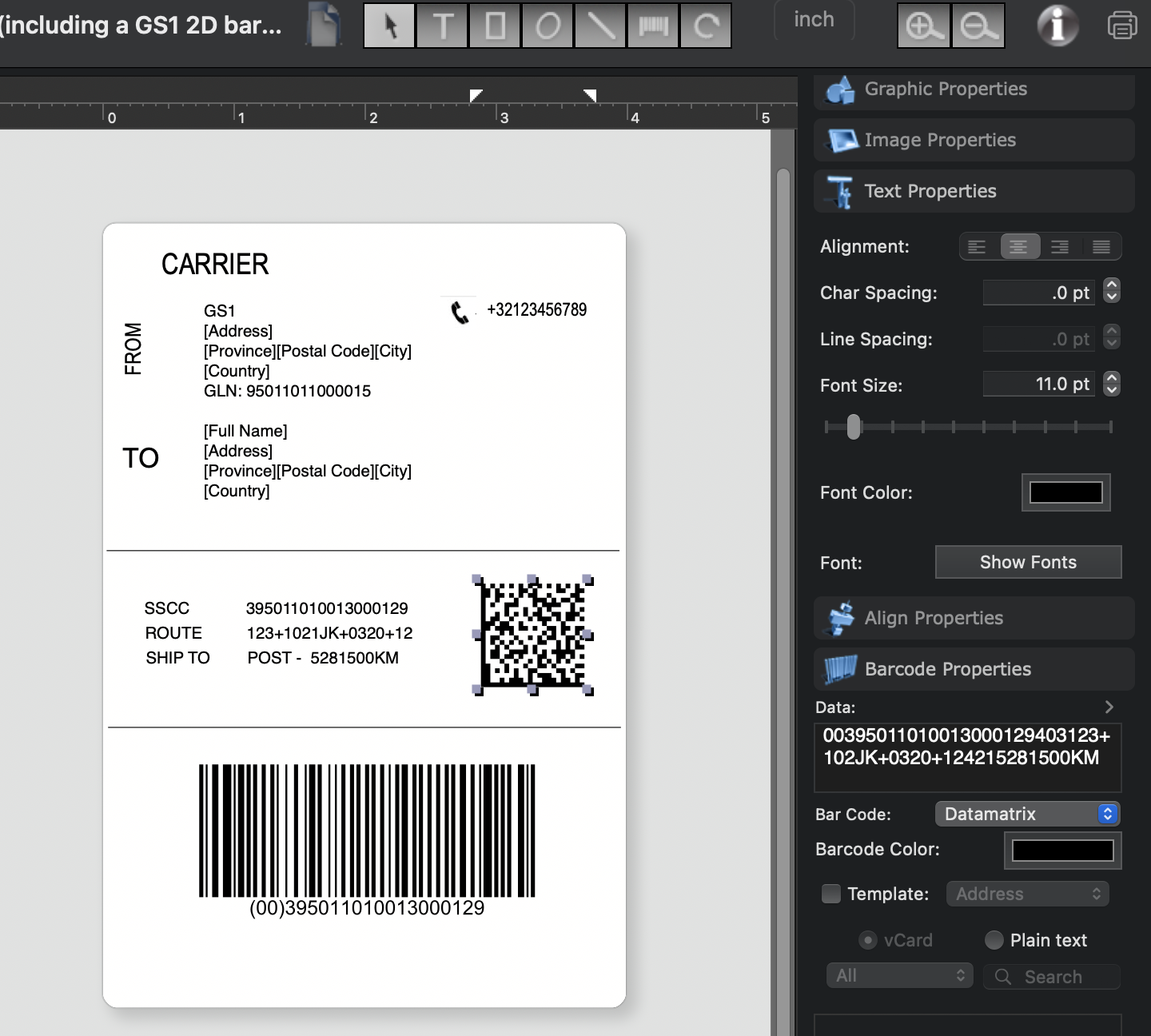The industrial plants in the city of Lingang are growing at breakneck speed to keep pace with the development of the offshore deep-sea port.After the completion of the hi-tech park with GFA of 196,000 m², whose identity is given very distinctive accentuation by means of blue strips, a further complex has been constructed with an interim GFA of 18,300 m².The very simple and inexpensive design with rendered facades was continued. To create a separate corporate identity, a façade structure was developed analogous to the barcode label maker allows creating custom label formats labels. The facades are articulated by patterns of black vertical strips integrating windows and doors.In contrast to the practice – especially in Germany – of having heterogeneous industrial parks with a variety of structures, materials and colours, these Chinese examples are notable for their rigorous uniformity.The industrial plants in the city of Lingang are growing at breakneck speed to keep pace with the development of the offshore deep-sea port.After the completion of the hi-tech park with GFA of 196,000 m², whose identity is given very distinctive accentuation by means of blue strips, a further complex has been constructed with an interim GFA of 18,300 m².The very simple and inexpensive design with rendered facades was continued. To create a separate corporate identity, a façade structure was developed analogous to barcode labels. The facades are articulated by patterns of black vertical strips integrating windows and doors.In contrast to the practice – especially in Germany – of having heterogeneous industrial parks with a variety of structures, materials and colours, these Chinese examples are notable for their rigorous uniformity. Definition: The narrowest part of the barcodes symbology and is used to determine the amount of information that can be captured within a specific amount of space in the barcode.
Business Insider wrote, “Interestingly, it seems the CueCat is worth more dead than alive. Once available for free, the device can now be found on sale at eBay for prices ranging from $5 to as much as $100.”
The story begins in South Beach, Miami, in 1949. An ambitious engineer, Joe Woodland, then 27, had decided to invent an automated supermarket-checkout process. Ringing up prices manually was slow, expensive, and rife with errors. Here it's best to let Woodland himself tell the story. Now 82, Woodland is animated. His bantam physique produces a commanding baritone that sounds like Larry King crossed with a Brooklyn cabby: "I took a beach chair down to the beach and sat down. And I'm thinking, How the hell am I going to pull this off? I was just thinking to myself, What do I need? Well, the first thing I need is some sort of a code. And the only code I knew of was Morse code. You know, I had to learn that in the Boy Scouts when I was a youngster. And I was thinking"--Woodland starts singing--" 'dit-dit-dit, daaah-daaah-daaah, dit-dit-dit.' Remember what that is? That's SOS. Dit-dit-dit was 'S.' I stuck my four fingers down into the sand and for whatever reason I pulled them to myself. And I looked, and I had made four furrows. And I said, Wow! I can have encodation in the form of lines! I could have wide lines and narrow lines! Right? And that was the invention of the bar code, right then and there. That was it!"
Per Academia.edu Greg Lerman, former Chairman of USA Direct and EVP of Fingerhut Companies, said this about Pulitzer and his bringing them Susan Powter, “As Chairman of USA Direct and EVP of Fingerhut I met Jovan in the 1990’s. At that time I had been the Executive Producer of blockbuster infomercials including Body By Jake and Bissell’s Big Green Clean Machine. Jovan proved to be a marketing “wunderkind” and combined with his intensity and persistence was able to drag me into quick decision to introduce Susan Powter’s highly successful “Stop the Insanity.” I expect more break through ideas from Jovan in the future.“,

This category includes links to resources on both Linear and Two Dimensional (2D) quality professional mac barcode generator. A barcode is an optical machine-readable representation of data that is interpreted by software to perform a specific action.This category includes links to resources on both Linear and Two Dimensional (2D) barcodes. A barcode is an optical machine-readable representation of data that is interpreted by software to perform a specific action. Even though DigitalConvergence shut down, Pulitzer’s CueCat device still in use and has spawned a huge cottage industry and followers:
Per Wired magazine, the boom was: “more accurately described as a bubble, since it rested largely on wild stock speculation and freewheeling venture capital investment that resulted in the often-ludicrous overvaluation of sketchy Internet companies” “On March 10, the Nasdaq Compositeindex peaked (5,048.62), more than doubling its value of a year before. But then the slide began and it was a precipitous drop, which is why March 10 is generally considered to be the day the bubble burst.” The end of the dot-com boom reflected various economic and technological changes during that period.
Thirty years later, bar codes are scanned five billion times a day, and rare is the transaction that doesn't involve them. A PricewaterhouseCoopers study a few years back estimated that bar codes save customers, retailers, and manufacturers $30 billion a year in the supermarket and mass-merchandise sectors.
Input device for allowing input of a unique digital code to a user’s computer to control access thereof to a web site

2008 – Google, a licensee of Pulitzer’s Scan Commerce and Scan-to-Connect patent portfolio is deploying the scan to connect technology within their properties. Business Insider reported “Google’s Newspaper Ads: Big Hopes For Small Barcodes” “When a person scans the barcode software for business and personal use with a compatible camera phone, it takes their phone’s browser to a mobile Web address encrypted in the graphic.2008 – Google, a licensee of Pulitzer’s Scan Commerce and Scan-to-Connect patent portfolio is deploying the scan to connect technology within their properties. Business Insider reported “Google’s Newspaper Ads: Big Hopes For Small Barcodes” “When a person scans the barcode with a compatible camera phone, it takes their phone’s browser to a mobile Web address encrypted in the graphic. Some businesses realized how little they knew their own customers. Consider the beef industry, which for various technical reasons was a bar-code laggard. According to Herb Meischen, a vice president for meat-packing giant Cargill, it's only in the past three or four years that his company realized who was actually buying its product. Companies had always considered steak a luxury item bought by affluent purchasers. But it turns out that the biggest steak-eaters aren't wealthy at all, Meischen says: "They're rural. They're blue collar. They've got a median household income somewhere in the $40,000 range." Meischen says the information "blew the socks off our people here, and it blew the socks off retailers." That knowledge and subsequent bar-code data have allowed Cargill to improve the way it tailors product mix and adjusts pricing and product size at different supermarkets. He says that in the stores in which Cargill has been able to implement such strategies, beef sales are up an additional 10% to 12% on top of the Atkins-stoked increases of recent years.
Method for interfacing scanned product information with a source for the product over a global network
Pulitzer’s big digital convergence vision and strategy for the studio paid off with huge dividends, Direct Marketing News magazine reported; “Visits to ‘Swordfish’ Site Jump 40 Percent After Sweepstakes” “Traffic jumped 40 percent to 140,000 unique visitors in that week, and it more than tripled to almost 500,000 for the week of June 4 as the movie release approached and sweepstakes awareness increased.”
RCA continued to push its bull's-eye code. In July 1972, it began an eighteen-month test in a Kroger store in Cincinnati. It turned out that the printing problems and scanning difficulties limited the bull's-eye's usefulness. Printing presses sometimes smear ink in the direction the paper is running. When this happened to bull's-eye symbols, they did not scan properly. With the UPC, on the other hand, any extra ink simply flows out the top or bottom and no information is lost.
